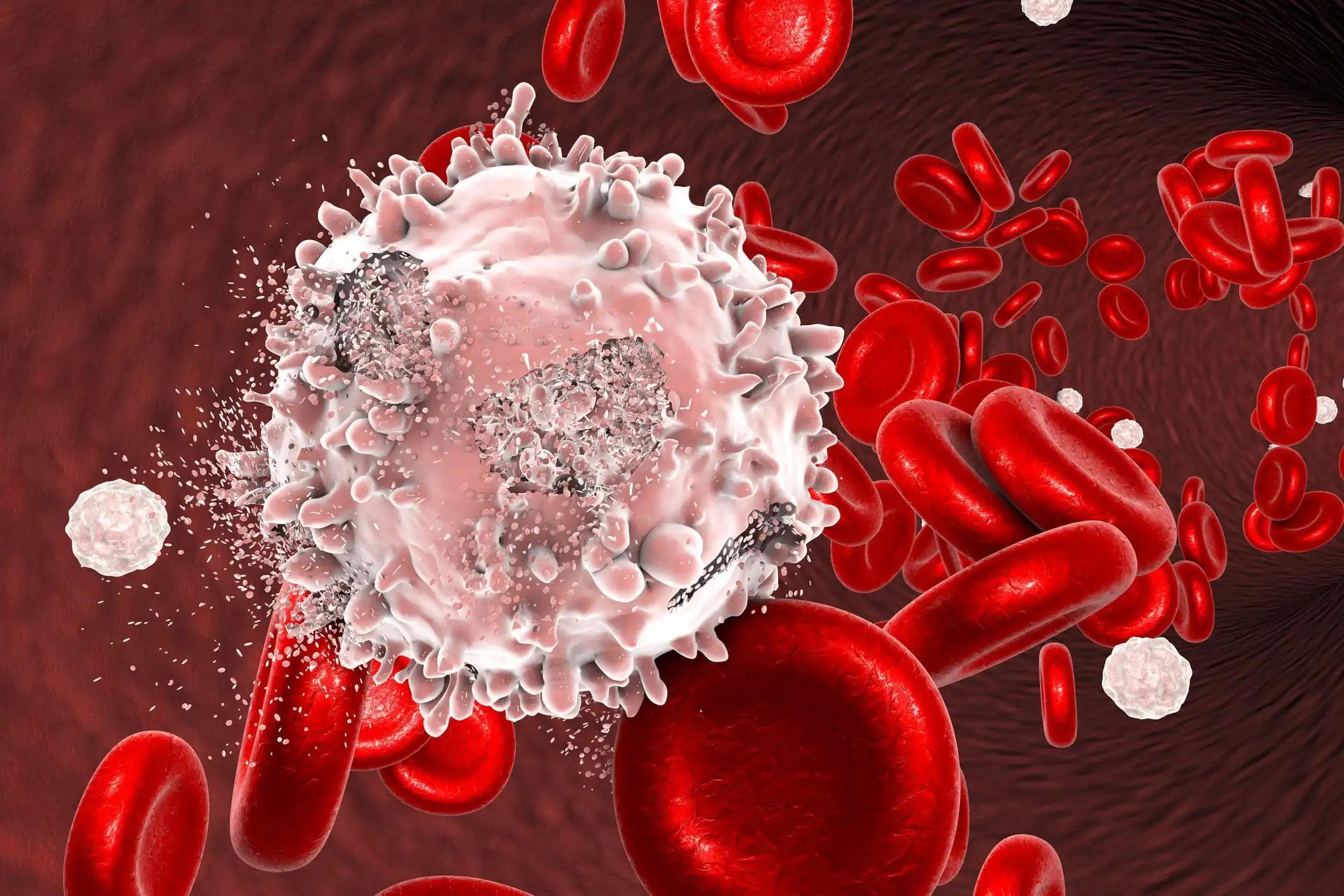KEY TAKEAWAYS
- The ELM-2 Phase 2 trial presented a second pre-specified interim analysis, aiming to assess odronextamab’s efficacy, and safety in RR FL pts.
- The primary endpoint was to determine ORR, and secondary endpoints included CR rate, DoR, PFS, and OS.
- Researchers noticed profound and lasting responses with odronextamab in refractory FL pts; additional information will be provided later.
The class of CD20×CD3 bispecific antibodies (BsAbs) has emerged as a crucial therapeutic approach for patients (pts) with relapsed/refractory (R/R) B-cell non-Hodgkin lymphoma. Odronextamab, an innovative off-the-shelf CD20×CD3 BsAb, has demonstrated compelling efficacy in R/R diffuse large B-cell lymphoma and R/R follicular lymphoma (FL). In the Phase 2 ELM-2 study, odronextamab monotherapy exhibited a noteworthy 75% complete response (CR) rate and promising durability of responses in pts with R/R FL, demonstrating generally manageable safety. Jose. C. Villasboas and his team aimed to provide the results of a second, pre-specified interim analysis of the ELM-2 trial.
They performed an inclusive analysis of the administration protocol for intravenous odronextamab in the ELM-2 study. Odronextamab was given weekly in 21-day cycles during Cycles (C) 1–4, with a step-up regimen optimized to mitigate cytokine release syndrome (CRS), as previously reported (Kim TM, et al. ASH. 2022). The administration involved steroid prophylaxis and step-up doses of 0.7/4/20 mg during C1, followed by 80 mg on Days 1, 8, and 15 of C2–4. Subsequently, odronextamab maintenance treatment continued at 160 mg every 2 weeks until disease progression or unacceptable toxicity. Patients achieving a durable CR for ≥9 months transitioned to dosing every 4 weeks. A pre-specified interim analysis occurred when 80 pts had completed ≥12 months of follow-up.
The primary endpoint was the objective response rate (ORR), assessed by an independent central review (ICR) following the Lugano classification. Key secondary endpoints encompassed the CR rate, duration of response (DoR), progression-free survival (PFS), overall survival (OS), and changes in scores of patient-reported outcomes. Additionally, minimal residual disease (MRD) was explored as an endpoint.
About 128 pts were efficacy-evaluable, with 85 pts having a follow-up of ≥12 months in the fully enrolled global study by the January 31, 2023 data cutoff. The median duration of study follow-up for efficacy was 26.6 months. In the safety-evaluable FL population, with a median age of 60.5 years (range 22–84), 53% were male. Patients had received a median of 3 (range 2–13) prior lines of therapy, and 73% were refractory to their last therapy, including 41% being double refractory and 74% refractory to an anti-CD20 antibody.
50% pts experienced progression of disease within 2 years (POD24), and 29% had a prior autologous hematopoietic stem cell transplant. The ORR and CR rates by ICR were 80% (102/128) and 72% (92/128), respectively, consistent across pts with high-risk features. Responses were durable, with a median DoR and duration of CR of 21.7 months; the probability of maintaining CR for 24 months was 48%. Median PFS was 20.7 months (95% CI: 16.7–26.5), and median overall survival (OS) was not reached; the probability of survival at 3 years was 63%.
Patient-reported overall quality of life (QoL) scores were maintained throughout treatment. MRD status at 12 weeks was highly predictive of PFS. Safety profiles remained consistent with previous reports, with no new treatment-related Grade (Gr) 5 events recorded since the first interim analysis. Common treatment-emergent adverse events (>30% all grades) included CRS (55%), anemia (34%), neutropenia (34%), and pyrexia (33%). With the optimized 0.7/4/20 mg step-up regimen (n=72), 98% of CRS events were Gr 1/2, and only one patient experienced Gr 3 CRS. Supportive measures resolved all CRS events, with 13 patients receiving tocilizumab for CRS management with the optimized regimen. One low-grade immune effector cell-associated neurotoxicity syndrome (ICANS) event occurred. Grade ≥3 infections were reported in 50 (36%) pts (Gr 5, n=14 [10%]), with COVID-19 infections documented in 46 (35%) pts (Gr 5, n=8 [6%]).
The study concluded that odronextamab exhibits consistent deep and durable responses in heavily pretreated, refractory pts with R/R FL. Notably, 90% of responders achieved CRs, with a 48% probability of maintaining CR for 2 years. The high CR rates correlate with favorable long-term survival outcomes in the context of an incurable disease. Adverse events aligned with earlier reports, and no new treatment-related Grade 5 events were observed. Importantly, continued odronextamab treatment showed no detrimental effects on overall QoL. These findings highlight the potential of odronextamab as a promising and effective therapeutic option for managing R/R FL. Updated data will be presented to substantiate these promising results further.
The study is sponsored by Regeneron Pharmaceuticals
Source: https://ash.confex.com/ash/2023/webprogram/Paper181650.html
Clinical Trial: https://clinicaltrials.gov/study/NCT03888105
Villasboas J C, Kim T M, Taszner M, et al. (2023). “3041 Results of a Second, Prespecified Analysis of the Phase 2 Study ELM-2 Confirm High Rates of Durable Complete Response with Odronextamab in Patients with Relapsed/Refractory (R/R) Follicular Lymphoma (FL) with Extended Follow-up.” Presented at ASH 2023 (Abstract 3041).



